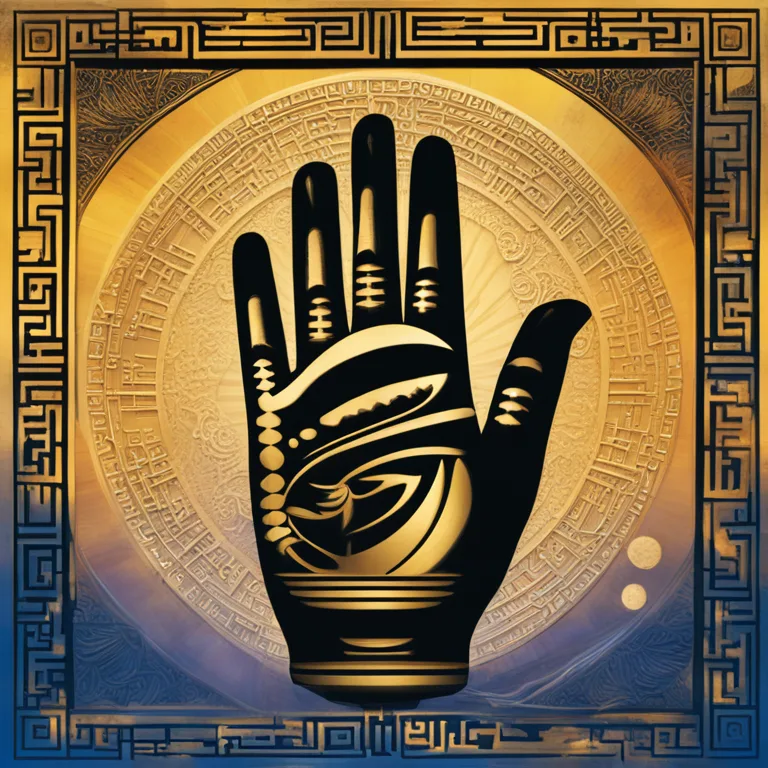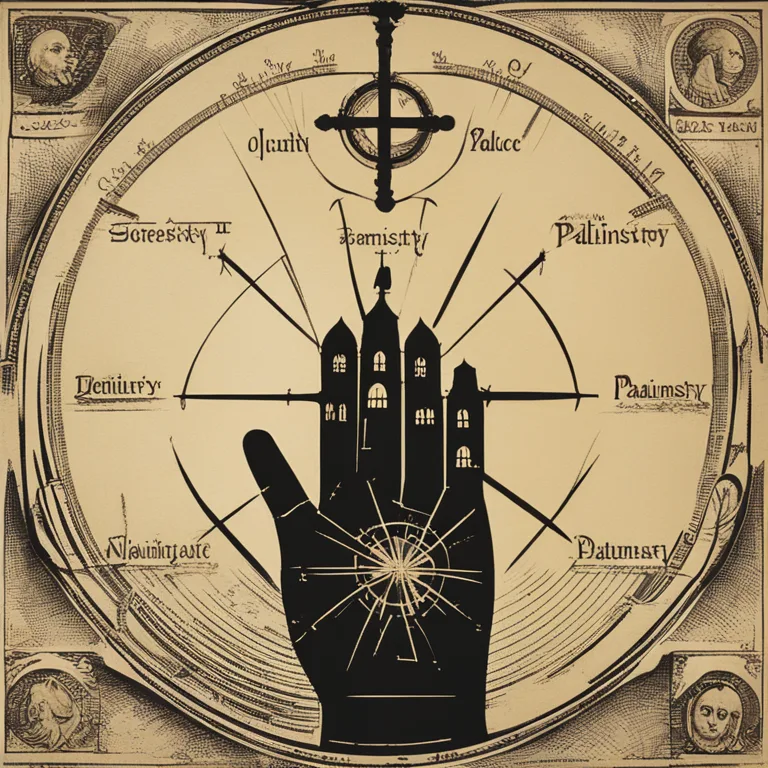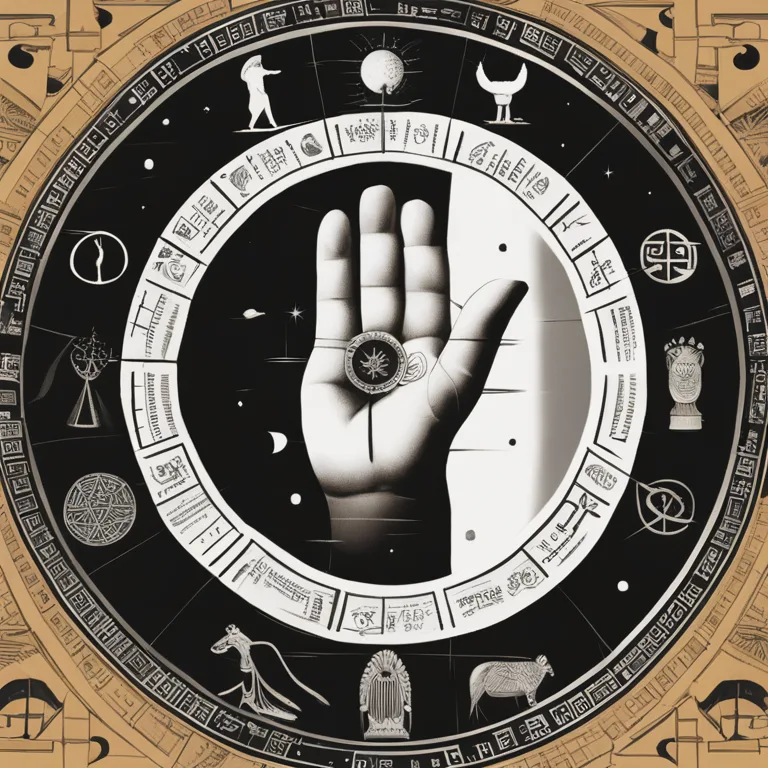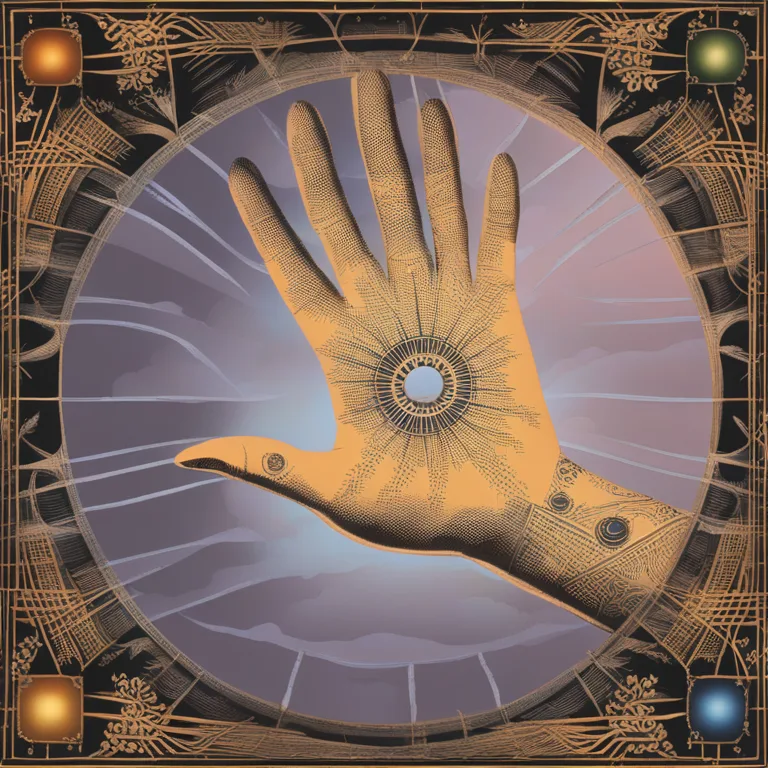
The Origins of Palmistry: A Historical Roots
Discover the historical roots of palmistry and the journey of hand analysis from ancient wisdom to modern interpretations.
article by Nora Pennington
The Dawn of Palmistry
Palmistry, also known as chiromancy or hand analysis, is the art of interpreting a person's characteristics and predicting their future through the study of their palms. This ancient practice, shrouded in mystery, is believed to have originated thousands of years ago. The exact beginnings of palmistry are lost to history, but evidence suggests that it was practiced in diverse ancient cultures, including India, China, Egypt, and Mesopotamia. It was in these cradles of civilization that the art of reading hands first flourished, merging astrological knowledge with the human body.

Cradle of Civilization: The Palmistry Trail
The earliest written records of palmistry come from the Vedic scriptures of India, suggesting a Hindu origin. From there, it's said to have spread to China, Tibet, Persia, Egypt, and Greece. In China, palmistry was associated with I Ching, a form of divination based on the Book of Changes. Aristotle's fascination with the subject allegedly led to its dissemination through his influence on Alexander the Great, who then introduced palmistry to the Western world around the 4th century BCE.

The Ancient Greek Influence
Aristotle's works were instrumental in bringing palmistry to Europe, where it became integrated with Greek mythology and astrology. The Greeks developed their own system, attributing different parts of the hand to various gods and goddesses, linking the practice to their pantheon and the early principles of Western astrology. This merger with European cultures widened the scope of palmistry, leading to its growth as an intriguing and respected practice, albeit often viewed with skepticism by the scientific community.

The Middle Ages and Palmistry's Decline
During the Middle Ages, palmistry encountered a significant setback. The rise of the Catholic Church and its condemnation of occult and pagan practices led to a widespread repression of palmistry across Europe. It was labeled as sorcery and was strictly prohibited. Palmists were forced to practice in secrecy or abandon the art altogether. Despite this, palmistry survived, albeit under reduced circumstances, thanks to the ongoing curiosity about the unknown and the unexplained among the general public.

Renewal in the Renaissance
The Renaissance brought with it a resurgence of interest in the natural sciences, art, and humanism, which in turn kindled a rebirth of palmistry. This period saw a rise in scholarly works on the subject, which began to dissect and formalize palmistry into a more structured study. It included the publishing of key texts, such as "The Art of Chiromancy" by Johannes Hartlieb in 1464, which introduced a detailed system of lines and mounts, helping to categorize and validate palmistry processes.
Palmistry in Modern Times
Moving into the modern era, palmistry continued to evolve, with figures like William John Warner, also known as Cheiro, bringing it into the public eye during the 19th and early 20th centuries. Cheiro wrote books and gave readings to famous individuals, turning palmistry into a subject of popular culture. Today, the integration of psychological methods into palmistry, along with a renewed interest in new age philosophies and holistic health, has kept the art alive and relevant as both a form of entertainment and a therapeutic tool.
Conclusion: Palmistry's Enduring Legacy
From its ancient roots to modern day interpretations, palmistry has endured as a testament to humanity's enduring fascination with self-discovery and destiny. Regardless of who invented palmistry or how it truly began, its story is one of survival against the odds, adapting and changing through countless generations and cultures. As we continue to search for answers about our lives and our place in the cosmos, palmistry offers a unique perspective that bridges the gap between science and spirituality.
Published: 1/3/2024
Modified: 1/3/2024
More predictions
Come back here soon to learn more about yourself and your future


Palmistry Lifespan Insights: How Long May You Live?
Delve into the art of palmistry to discern potential lifespan indicators from the lines and features of your hands in this insightful article.


Palmistry Insights on Love: Counting Your Relationships
Discover what palmistry reveals about your romantic journey. This article shares insights on interpreting your palm lines for potential relationships.


Palmistry's Insight into Your Health
Discover the connections between the lines on your palm and your well-being in this comprehensive look at palmistry’s role in health forecasting.